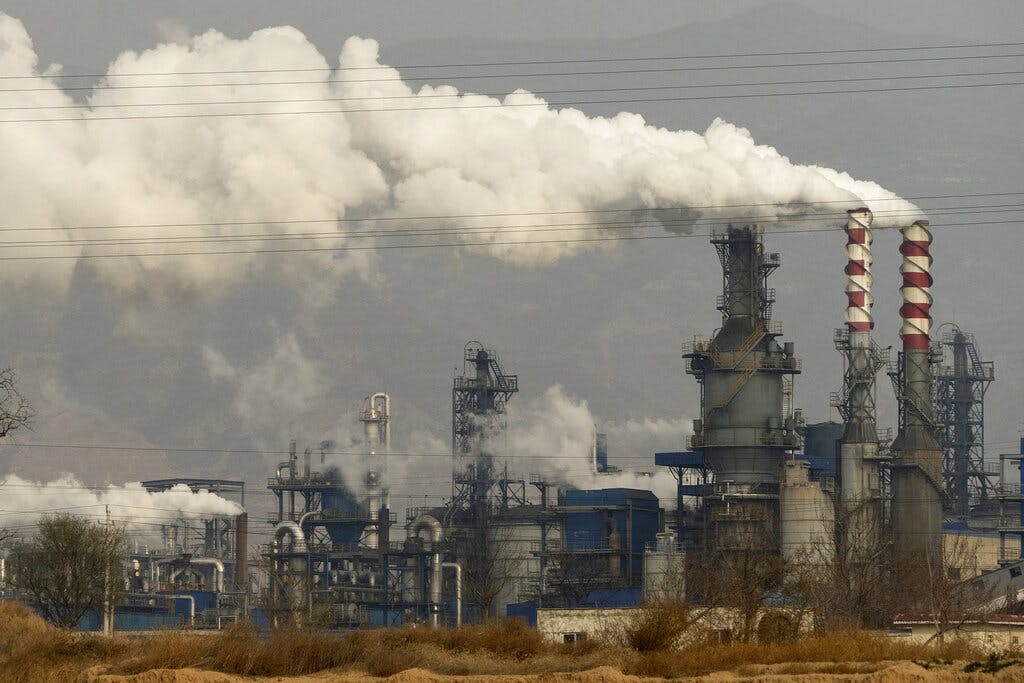Ignoring International Pressure, China Ramps Up Coal Power Production
More new coal-fired plants were started in China in 2022 than in the rest of the world combined.

President Biden’s plans to spend hundreds of billions of dollars to try to curb climate change are running up against the ugly geopolitical reality that China has no plans to join the growing international effort. Nowhere is that more apparent than in Beijing’s embrace of a fossil fuel that has become anathema in the rest of the world — coal.
A report out this week from the Centre for Research on Energy and Clean Air says China accelerated its investment in coal power plants dramatically in 2022, with new permits reaching the highest level since 2015. More new coal-fired plants were started in China in 2022 than in the rest of the world combined, the report said.
“China continues to be the glaring exception to the ongoing global decline in coal plant development,” a research analyst with the center, Flora Champenois, said. “The speed at which projects progressed through permitting to construction in 2022 was extraordinary, with many projects sprouting up, gaining permits, obtaining financing, and breaking ground apparently in a matter of months.
“This kind of a process leaves little room for proper planning or consideration of alternatives,” she added.
The report states that construction of more than 50 gigawatts worth of coal power capacity began in China in 2022, an increase of 50 percent over 2021. The center expects more of the same in 2023.
China’s president, Xi Jinping, has promised that his country would begin scaling back its coal consumption, but not until 2026. That so many new coal plants — financed and managed by companies with powerful political connections — are coming online, though, has analysts skeptical of his claims. The owners of these plants now have a vested interest in slowing the country’s transition to cleaner energy and a phase-out of coal, according to the report’s authors.
Of all the fossil fuels that activists blame for climate change, coal is by far the worst offender, accounting for as much as 30 percent of all energy-related carbon dioxide emissions. It is also the planet’s top source of electricity, according to the International Energy Agency, especially in developing economies like China, India, and Indonesia.
Until the war in Ukraine threw the continent’s energy industry into turmoil, Europe had been aggressively moving away from coal in recent years in order to meet goals laid out in international agreements. Since 2012, total coal-powered energy generation has dropped by a third in the European Union. Ten nations in the bloc were described as “coal-free” in 2021, and the remaining members have pledged to phase out its use at various points between now and 2038.
Mr. Biden and his allies in the climate change lobby have turned coal into public enemy no. 1 in America. During a campaign stop in California before last year’s midterm elections, the president lamented the country’s continued use of coal — about 20 percent of its electricity still comes from coal — and pledged that “we’re going to be shutting these plants down all across America and having wind and solar.” The White House later attempted to walk back the comments after coal-country legislators such as Senator Manchin of West Virginia erupted in anger.
Despite the dust-up, killing coal remains a key item in the Biden climate change agenda. His climate envoy, John Kerry, pledged at last year’s international climate change summit in Egypt that the country would be coal-free by 2030. Without legislative backing for its climate agenda, the administration is turning to regulators to hasten coal’s demise.
This spring, the Environmental Protection Agency is expected to issue a number of new rules that are seen triggering a number of coal plant retirements around the country and making many of those remaining prohibitively expensive to operate. To offset the loss of generating capacity, the administration committed to spending hundreds of billions of dollars in taxpayers’ money to prop up wind and solar projects in last year’s so-called Inflation Reduction Act.
Without buy-in from developing economies in the rush to eliminate coal, though, all the spending by Europe and America in their efforts to curb climate change will be for naught. If anything, the reports about China’s continued enthusiasm for coal suggests the country is moving in the opposite direction of everyone else.
The worst-case scenario, according to the Centre for Research on Energy and Clean Air, is a major increase in China’s CO2 emissions over the coming decade that would “undermine the global climate effort, and could even put China’s own climate commitments in danger.”

